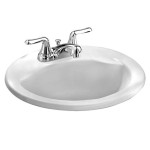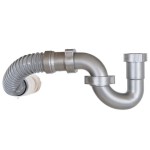How to Get Rid of Black Mold in Bathroom Floor
Black mold, a common sight in humid environments like bathrooms, is more than just an eyesore. It can pose health risks, especially for those with respiratory issues or allergies. This article will guide you through the process of effectively removing black mold from your bathroom floor, ensuring a clean and healthy environment.
Understanding Black Mold
Black mold, also known as Stachybotrys chartarum, thrives in damp areas with high humidity levels. It releases mycotoxins, which can trigger allergic reactions, respiratory problems, and even neurological issues. Preventing moisture buildup is crucial for avoiding black mold growth in the first place.
Assessing the Mold Infestation
Before embarking on mold removal, a thorough assessment is necessary to determine the extent of the infestation.
- Identify the Source of Moisture: The first step is identifying the root cause of moisture buildup. This may involve leaky pipes, poor ventilation, or excessive water spills.
- Evaluate the Severity: Observe the spread of the mold. Small, localized patches can often be tackled with DIY methods. However, large, widespread infestations might require professional help.
Steps to Remove Black Mold from Your Bathroom Floor
Once you have identified the source and assessed the severity, you can proceed with the removal process.
1. Preparation
- Protect Yourself: Wear protective gear, including gloves, a mask, and goggles, to prevent exposure to mold spores.
- Clear the Area: Remove all items from the affected area, including furniture, rugs, and towels.
- Ventilate the Room: Open windows and doors to improve air circulation and help remove mold spores.
2. Cleaning the Floor
- Use a Mold-Killing Solution: Mix a solution of bleach and water in a ratio of 1:10. Be cautious when using bleach as it can damage some surfaces. For sensitive materials, consult a cleaning professional.
- Scrub the Affected Area: Apply the bleach solution using a stiff-bristled brush, paying particular attention to the moldy areas.
- Rinse Thoroughly: After scrubbing, rinse the floor with clean water to remove any remaining bleach solution and mold spores.
3. Drying the Floor
Thorough drying is crucial to prevent mold regrowth.
- Air Drying: Allow the floor to air dry completely. Use fans to accelerate the drying process.
- Dehumidifier: If the bathroom remains humid, use a dehumidifier to extract excess moisture from the air.
4. Addressing the Source of Moisture
Once the mold is removed, address the underlying cause of moisture.
- Repair Leaky Pipes: Contact a plumber to repair any leaking pipes or fixtures immediately.
- Improve Ventilation: Ensure adequate ventilation by using a bathroom exhaust fan, opening windows, or installing a dehumidifier.
Additional Tips
Here are some extra tips for preventing and combating mold:
- Regular Cleaning: Clean your bathroom floor regularly with a mild detergent and warm water.
- Wipe Up Spills Quickly: Promptly clean up any water spills to prevent mold growth.
- Use a Shower Curtain Liner: Replace a moldy shower curtain liner with a new one.
Remember, removing black mold from the bathroom floor requires a multi-pronged approach. By taking these steps, you can effectively eliminate the mold, prevent its recurrence, and create a healthier environment for yourself and your family.

What Do About Black Mold In The Bathroom Bob Vila

How Do I Remove Black Mould From Shower Floor

Black Mold In The Shower How To Clean It Kitchen With Matt

Killing Preventing Black Mold In The Bathroom

The Ultimate Guide On How To Clean And Get Rid Of Mold Pro Housekeepers

How To Get Rid Of Mold In The Shower On Bathroom Walls Clorox

Safely Remove Black Mold From Your Subfloor Frugal Thumb

What To Do If You Find Toxic Black Mold Safewise Com

How To Get Rid Of Black Mold In Bathrooms

Kill Bathroom Mould Without Bleach Electrodry Blogs
Related Posts







